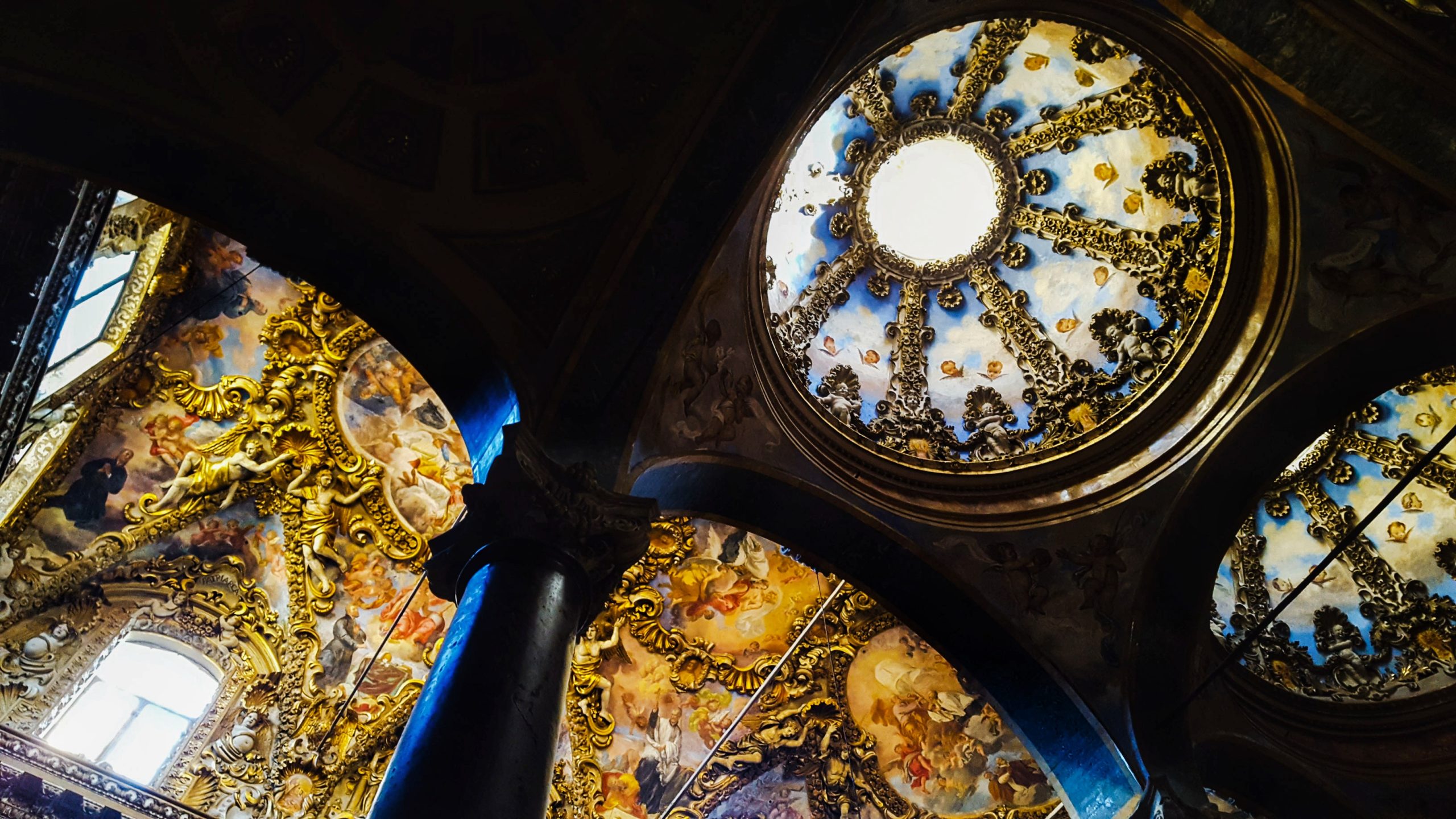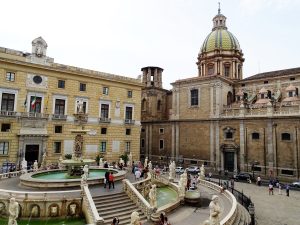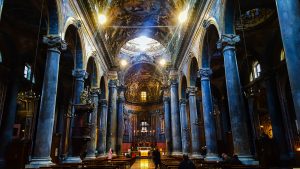
Read English version

- Orario visite: da lunedì a sabato 07.15 /12.00 – 05.00pm / 08.00pm – Domenica e festivi 07.30am /12.30pm – 05.00pm / 08.00pm
- Visite sospese durante le celebrazioni.
- Contatti: tel 091 33 12 39
*ENGLISH
At the beginning of the seventeenth century Palermo’s life was marked by the cut of Maqueda street. Many noble families, many Congregations, and various religious Orders quickly rushed to free spaces and built their palaces and churches.

The Theatine Fathers, followers of San Gaetano da Thiene, erected their monumental church and dedicated it to St. Joseph. It is an impressive and superb building which overlooks one of the most beautiful and suggestive corners of the city of Palermo, that is one of the four cantons of Piazza Vigliena, known as the “Teatro del sole” (The Theatre of The Sun), “Quattro Canti” and so on.
Outside, the church shows us, above all, a side of the architectural scenary flat at the wonderful Pretoria Square – “Piazza della Vergogna”, with the precious fountain by Camilliani.The two facades overlooking the Vittorio Emanuele course are embellished, respectively, by the statue of San Giuseppe by Baldassarre Pampillonia and by the emblem of the carpenters ( the former), while the latter with the statues of San Gaetano and Sant’Andrea Avellino and the coat of arms of the Teatini Fathers.
Inside, the church is divided into three aisles, by the grey marble columns of Billiemi and is covered by barrel vaults completely frescoed by the painter Filippo Tancredi and framed with stuccoes by Paolo Corso.
The dome was frescoed by the Flemish painter Guglielmo Borremans with the triumph of the Saints and of the Theatine Order Blessed.The precious presbytery is embellished by a superb altar covered with hard and precious stones and is surmounted by an ivory, bronze and agate crucifix.
The altars of the transept in colored marble and a baldachin covered with agate are surmounted by the seventeenthteenth century talented Sicilian painters’ works . The beautiful statue of St. Joseph with the Holy Child, the Crucifix attributed to Friar Umile from Petralia and the marble decorations complete the magnificence of this part of the church. The visit of the sacristy and the crypt are not to be missed.
- Timetable: Monday to Saturday 07.15 /12.00 – 05.00 / 08.00pm Sunday and holidays: 07.30am /12.30pm – 05.00pm / 08.00pm
- Suspended visits during celebrations
- Contacts: tel 091 33 12 39
